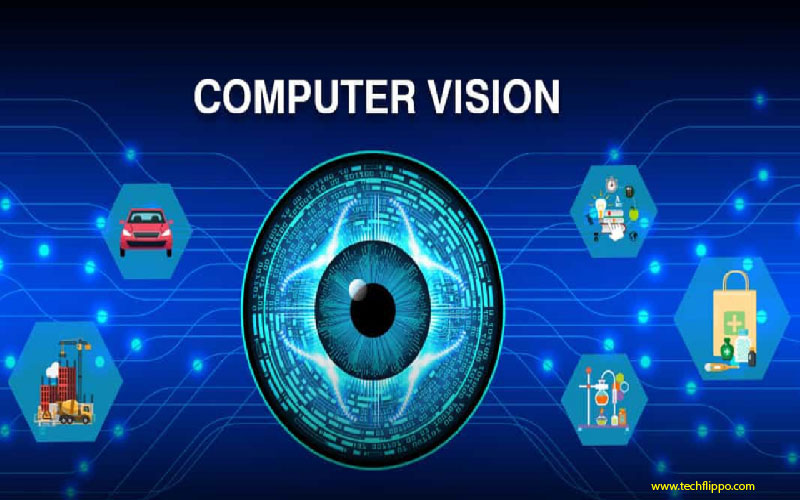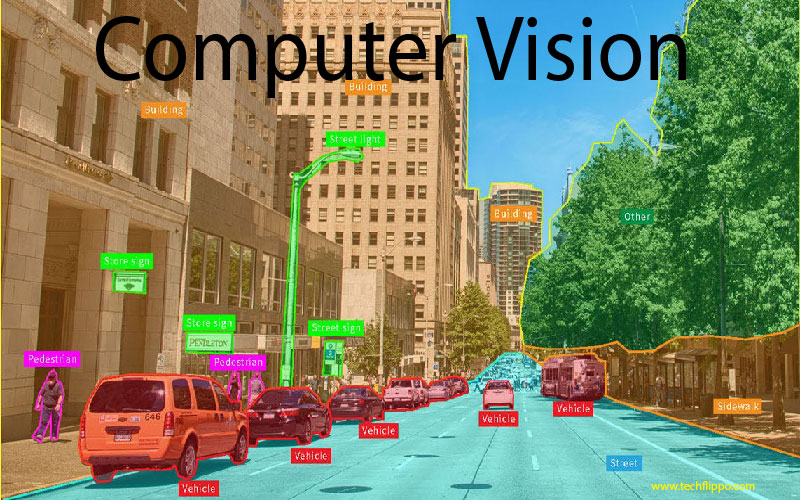How Computer Vision is Transforming Industries
Computer vision is rapidly changing the way we interact with technology. Imagine a world where machines can see, interpret, and respond to visual data just like humans do. This groundbreaking field of artificial intelligence enables computers to analyze images and videos, making sense of the visual world around us. From improving manufacturing efficiency to enhancing customer experiences in retail, the applications are vast and transformative.
As industries strive for innovation and competitiveness, computer vision stands out as a game-changer. It’s not just about automating tasks; it’s about unlocking new possibilities that were once confined to science fiction. Join us on this journey as we explore how computer vision is reshaping various sectors, its benefits, challenges it faces, real-world examples of its success stories—and what lies ahead for this fascinating technology.

Applications of Computer Vision in Various Industries
Computer vision is making strides across multiple sectors. In healthcare, it helps in diagnosing diseases through image analysis. Radiologists rely on advanced algorithms to identify tumors and anomalies in scans.
Retail leverages computer vision for inventory management. Smart cameras track stock levels in real-time, streamlining operations and reducing human error.
The automotive industry benefits significantly from this technology as well. Self-driving cars utilize computer vision to interpret their surroundings. This includes recognizing traffic signals, pedestrians, and road conditions.
Manufacturing uses computer vision for quality control too. Automated systems can detect defects faster than the human eye ever could, ensuring higher product standards.
Agriculture sees improvements with crop monitoring techniques powered by computer vision. Drones equipped with cameras analyze crop health and optimize resource usage efficiently.
These diverse applications showcase how integral computer vision has become across different fields today.
Benefits of Using Computer Vision Technology
Computer vision technology offers remarkable advantages across diverse sectors. One significant benefit is enhanced efficiency. By automating visual tasks, businesses can streamline operations and reduce manual labor.
Accuracy is another compelling factor. Computer vision systems often outperform humans in detecting patterns or anomalies, leading to higher quality control in manufacturing and improved diagnostics in healthcare.
Cost savings also come into play. Implementing computer vision reduces the need for extensive human resources while minimizing errors that could lead to costly mistakes.
Additionally, this technology enables real-time data analysis. Companies can make informed decisions quickly based on up-to-date visual information, boosting responsiveness to market changes.
The adaptability of computer vision allows it to evolve with business needs. From security surveillance to retail inventory management, its applications are as varied as they are beneficial.
Challenges and Limitations of Computer Vision
Computer vision technology, while revolutionary, faces several challenges that hinder its widespread adoption. One significant hurdle is the need for large datasets to train models effectively. Gathering and labeling these datasets can be time-consuming and expensive.
Additionally, variations in lighting, angles, or backgrounds can drastically affect performance. Computer vision systems may struggle with inconsistent quality across different environments.
Another limitation lies in interpretability. Understanding why a system makes certain decisions remains complex. This opacity can cause trust issues among users and stakeholders.
Moreover, ethical concerns arise regarding privacy and surveillance. As computer vision becomes more integrated into daily life, maintaining user consent becomes increasingly crucial.
These challenges require ongoing research and innovation to create robust solutions that enhance reliability while addressing societal implications.

Real-World Examples of Successful Implementation
Computer vision is making waves across various sectors, showcasing its transformative power through real-world applications. In retail, companies like Amazon Go have embraced this technology to create a cashier-less shopping experience. Customers walk in, grab items, and simply leave; the system automatically detects what they take.
In agriculture, startups employ computer vision for crop monitoring. Drones equipped with cameras capture images of fields to assess plant health and detect pests early on.
The automotive industry isn’t left behind either. Tesla’s advanced driver-assistance systems rely heavily on computer vision for features such as lane departure warnings and automatic braking.
Healthcare has seen significant improvements too. Hospitals utilize AI-powered imaging tools that analyze X-rays or MRIs faster than human radiologists while maintaining high accuracy levels.
These examples highlight how diverse industries harness computer vision to optimize operations and enhance user experiences.
The Future of Computer Vision
The future of computer vision is incredibly promising. As technology advances, we can expect even more sophisticated algorithms and models that will enhance image recognition capabilities.
Integration with artificial intelligence will lead to smarter systems capable of understanding context. This means machines not only see but also interpret visual data in ways that are increasingly human-like.
Real-time processing will become standard, enabling applications such as autonomous vehicles and smart surveillance systems to operate seamlessly in complex environments.
Moreover, accessibility will expand as software becomes more user-friendly. Industries from healthcare to retail can leverage these advancements without needing extensive technical expertise.
Ethical considerations will shape development too. Ensuring privacy and security while utilizing computer vision technologies is essential for building public trust.
With continued investment and research, the possibilities seem endless—paving the way for innovations we haven’t yet imagined.
Conclusion
The impact of computer vision on various industries is profound. From healthcare to manufacturing, this technology is reshaping how businesses operate and innovate. Its ability to analyze visual data has opened up new opportunities for efficiency and accuracy.
As computer vision continues to evolve, the potential applications are virtually limitless. The integration of artificial intelligence enhances its capabilities, making it an essential tool for future developments across sectors.
While challenges exist in terms of implementation and ethical concerns, the benefits far outweigh these hurdles. Industries that embrace computer vision stand to gain a competitive edge in today’s fast-paced market.
Embracing this transformative technology means staying ahead in innovation and improving overall operational effectiveness. As we look ahead, it’s clear that computer vision will play a pivotal role in shaping the future landscape of business and technology.